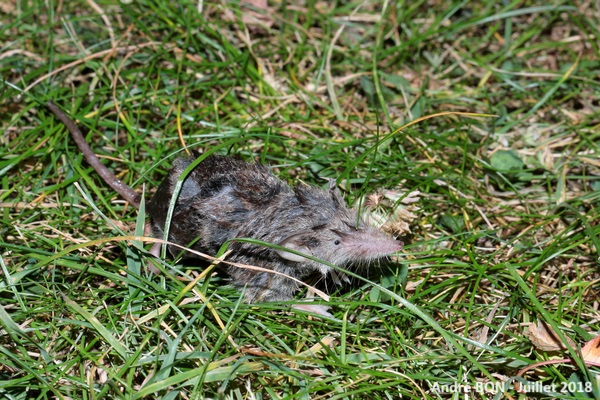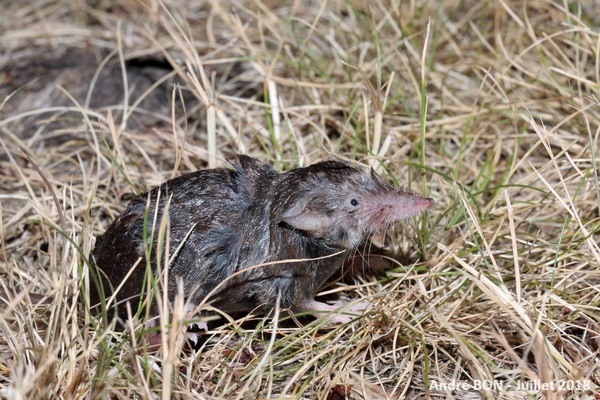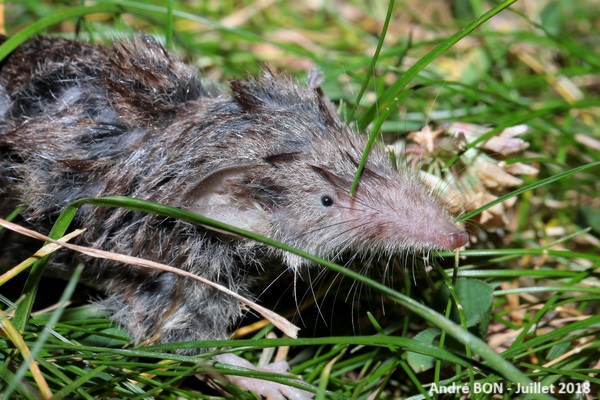


| Greater White-toothed Shrew (Crocidura russula (Hermann, 1780)) |



|
|
Scientific name: Crocidura russula (Hermann, 1780) Common name: Greater White-toothed Shrew French name: Crocidure musette, Crocidure aranivore, Crocidure commune. Family: Soricidae Size: Weight: 11 to 14 g; Body size: 6 to 9 cm to which 3 to 4.3 cm must be added for the tail. Biotope: Open areas, meadows, hedges, fallows, orchards, gardens, near human constructions in the north of the distribution area. Food: Insects, spiders and other small arthropods, gastropods, worms. Longevity : Up to 2 years. Geographic area: Western Europe north to 2/3 of Germany, missing in the British Isles, North Africa. |
Shrews are small, mainly insectivorous mammals with an elongated snout. Members of the Crocidura genus are white-toothed shrews (not easy to see in nature). The ears are clearly visible and clearly protrude from the hair. These two characteristics are also shared by shrews of the Suncus genus. The Greater White-toothed Shrew has a brownish upper body and a lighter underside but without a clear border. The tail has bristly hairs. You can sometimes observe movements in the form of a small train, led by the mother followed by the young, each grabbing the tail of the preceding one. The Bicoloured White-toothed Shrew (Crocidura leucodon) has a very clear demarcation between the grey back and the white belly. The snout is shorter. The Etruscan Shrew (Suncus etruscus) is significantly smaller in size. It is very difficult to differentiate the Greater White-toothed Shrew from the Lesser White-toothed Shrew (Crocidura suaveolens). This is almost only possible on dead animals. You must examine the upper jaw where you find an incisor followed by premolars. P1 is larger in size, P2 and P3 are the same size on the Greater White-toothed Shrew while P3 is smaller than P2 on the Lesser White-toothed Shrew. |
| [To know more about the Greater White-toothed Shrew] [Next picture] [Top] |

|
I arrived in time to save this shrew that had fallen into a watering can filled with water. The size and large prominent ears point towards the Crocidura genus but there is still a doubt between the Greater White-toothed Shrew and the Lesser White-toothed Shrew. |
| [To know more about the Greater White-toothed Shrew] [Next picture] [Previous picture] [Top] |

|
It is likely that this is a Greater White-toothed Shrew because I have already observed the entry of a shrew into my garage a few meters away. I read that it is a particularity of this species to enter buildings. |
| [To know more about the Greater White-toothed Shrew] [Previous picture] [Top] |

|
The shrew stayed on the grass for a few minutes to warm up and then left to hide in the vegetation. I took advantage of these little moments of stillness to shoot a few photos. |